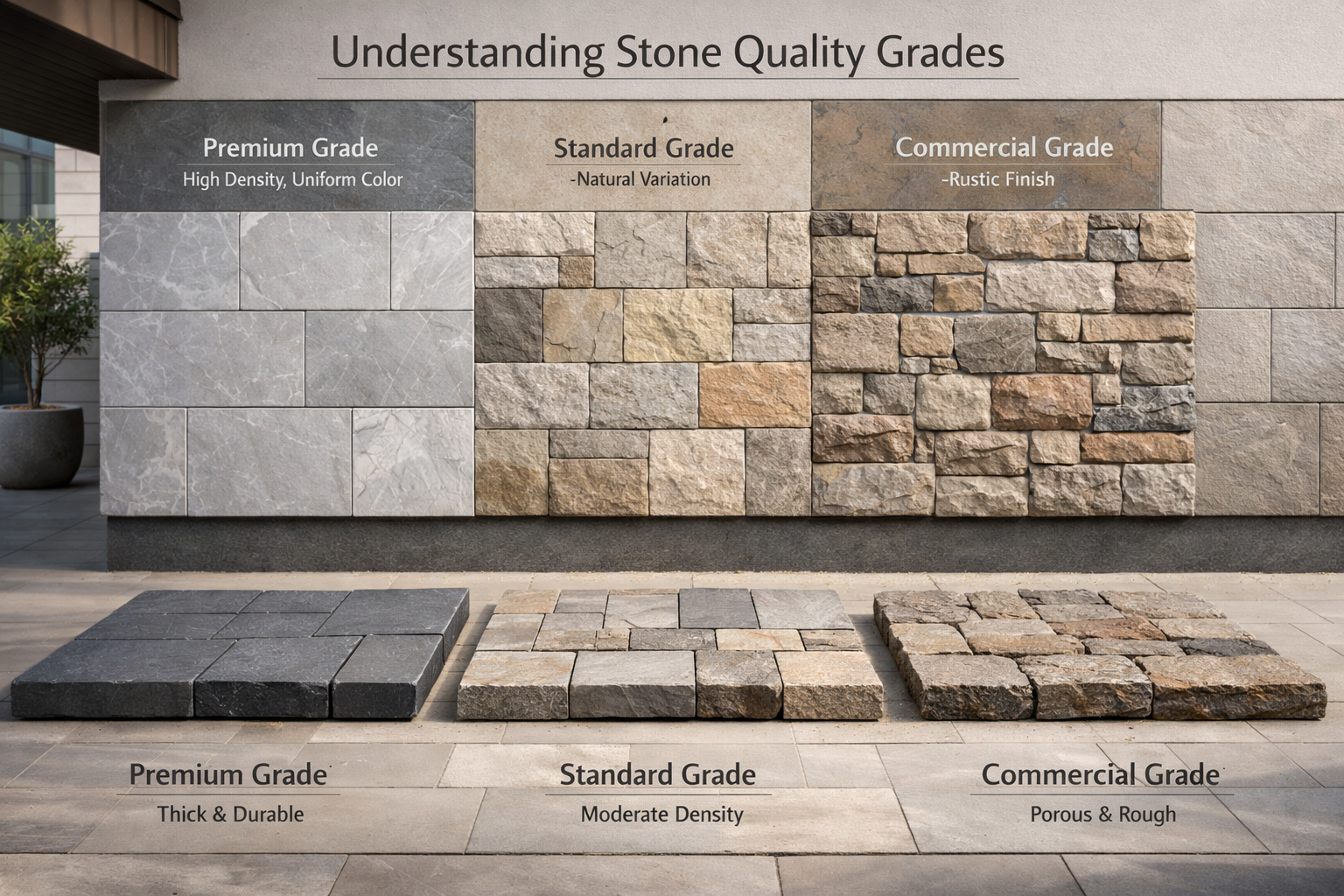When it comes to designing a beautiful and durable driveway, nothing quite matches the charm and longevity of cobblestones. These natural stone pavers have been used for centuries in roadways and driveways, offering a timeless look that enhances curb appeal while providing practical durability. However, selecting the right cobblestones for driveways can be a bit challenging, especially with the wide variety of options available in the market.
In this guide, we will walk you through everything you need to know about choosing the perfect cobblestones for driveways, from the types of materials available to installation tips and maintenance advice. By the end, you’ll be well-equipped to make an informed decision for your driveway project.
1. Why Choose Cobblestones for Driveways?
Before we dive into the selection process, let’s first discuss why cobblestones for driveways are a popular choice among homeowners.
- Durability: Cobblestones are made from natural stone, typically granite, limestone, or basalt, making them incredibly durable and long-lasting. They can withstand heavy traffic, extreme weather, and require minimal maintenance over time.
- Aesthetic Appeal: Cobblestones provide a rustic, old-world charm that adds sophistication to any driveway. Their unique shapes and natural color variations create a visually pleasing surface that enhances the overall look of your property.
- Sustainability: Because they are made from natural stone, cobblestones are an eco-friendly choice. They can be reused and repurposed, making them a sustainable option for homeowners looking to reduce their environmental footprint.
- Low Maintenance: Once installed, cobblestones require very little upkeep. They are resistant to cracking, chipping, and staining, meaning your driveway will look great for years without constant repairs.
2. Types of Cobblestones for Driveways
When selecting cobblestones for driveways, it’s essential to understand the different types of materials available. Each type has its unique qualities, so choosing the right one depends on your specific needs and preferences.
- Granite Cobblestones: Granite is one of the most popular choices for cobblestones due to its incredible strength and resistance to wear. It is ideal for high-traffic areas, making it perfect for driveways. Granite cobblestones also come in a variety of colors, including grey, pink, and black, allowing for versatile design options.
- Basalt Cobblestones: Known for its dark and rich color, basalt is another durable option for driveways. Its smooth texture and uniform appearance make it a modern choice for those looking to create a sleek and contemporary look.
- Limestone Cobblestones: Limestone is a softer stone compared to granite and basalt, but it still offers excellent durability. Limestone cobblestones often come in lighter shades like beige and cream, giving driveways a softer, more elegant appearance.
- Sandstone Cobblestones: Sandstone offers a more rustic and textured look. It is often used in traditional or countryside homes. Although it is less durable than granite, sandstone can still withstand regular driveway use and offers beautiful natural patterns.
3. Size and Shape Considerations
Cobblestones come in various sizes and shapes, and the right choice will depend on the design you have in mind for your driveway.
- Large Cobblestones: Larger cobblestones provide a more traditional and rugged look. They are also faster to install due to their size but may require a more robust foundation to ensure they stay in place.
- Small Cobblestones: Smaller cobblestones give a more refined and detailed appearance. They are perfect for intricate designs or curved driveways where precision is key. However, they may take longer to install compared to larger stones.
- Square and Rectangular Cobblestones: These shapes are ideal for creating a uniform, structured look. They are easier to install and provide a neat, organized pattern.
- Irregular or Tumbled Cobblestones: For a more natural, organic look, irregular or tumbled cobblestones are the way to go. They offer a rustic aesthetic with varied shapes and sizes, perfect for those looking for a more relaxed and informal driveway design.
4. Installation Tips for Cobblestones for Driveways
Once you’ve selected the material, size, and shape of your cobblestones for driveways, the next step is proper installation. Proper installation ensures the durability and longevity of your driveway.
- Base Preparation: The first step in installing cobblestones is to prepare the base. This involves digging out the existing surface to a depth of about 8-12 inches, depending on the weight the driveway will bear. A solid base layer of compacted gravel or crushed stone should be laid to provide stability and drainage.
- Edge Restraints: Installing edge restraints is crucial to keep the cobblestones from shifting over time. These can be made from metal, plastic, or concrete and should be installed along the perimeter of the driveway.
- Laying the Cobblestones: Cobblestones should be laid out in the desired pattern, starting from one corner and working your way outwards. You can choose from various patterns, including herringbone, running bond, or random patterns, depending on the look you want to achieve.
- Joint Filling: Once the cobblestones are in place, fill the gaps between them with sand or a specialized joint filler to lock them in place. This prevents the stones from shifting and ensures a smooth surface.
- Compacting: After filling the joints, use a compactor to press the stones firmly into place. This step is essential to prevent future movement and ensure the stones are tightly packed.
5. Maintenance of Cobblestones for Driveways
Although cobblestones for driveways are known for their low maintenance, a few simple practices will ensure they remain in excellent condition for years to come.
- Regular Cleaning: Sweep or hose down your cobblestone driveway regularly to remove dirt, debris, and organic matter. This prevents the buildup of moss and algae, which can make the stones slippery.
- Weed Control: Over time, weeds may grow between the joints of the cobblestones. To prevent this, apply a weed killer or lay weed-proof fabric under the base during installation.
- Resealing: Some types of cobblestones, like sandstone or limestone, may benefit from periodic sealing to protect them from water damage and stains. Sealing also enhances the color and appearance of the stones.
Conclusion
Choosing the right cobblestones for driveways can make a significant difference in the overall look and functionality of your property. From the type of material to the size and shape of the stones, there are many factors to consider when planning your cobblestone driveway. By understanding the options available and following best practices for installation and maintenance, you can create a stunning, durable driveway that will stand the test of time.
Whether you’re looking for a traditional, rustic appearance or a sleek, modern finish, cobblestones offer a versatile solution that combines beauty and practicality. With the right selection and care, your cobblestone driveway will not only enhance your home’s curb appeal but also provide years of reliable service.





